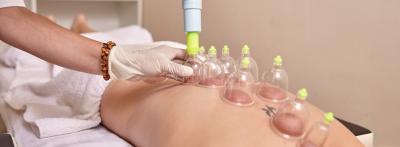Introduction
In the realm of holistic health and alternative medicine, there are various techniques that have stood the test of time and continue to capture the curiosity of people seeking natural solutions to their health woes. Cupping therapy, an ancient healing practice with roots dating back thousands of years, has gained renewed interest in recent times. This non-invasive and intriguing method involves the application of special cups to the skin, creating suction and promoting a range of potential health benefits. In this blog, we delve into the origins, techniques, benefits, and considerations of cupping therapy.
The Origins of Cupping Therapy
Cupping therapy is believed to have originated in ancient China, though it has also been practiced in other cultures, including Egypt and Greece. Originally, hollowed-out animal horns were used as cups in these ancient traditions. Over time, the practice evolved, and various materials such as bamboo, ceramic, and glass came to replace the original horns. In modern times, glass cups have become the preferred choice due to their transparency and versatility.
The Technique Behind Cupping
Cupping therapy involves creating a vacuum inside special cups and placing them on the skin. The vacuum can be generated in multiple ways:
- Fire Cupping: In this traditional method, a flame is briefly introduced into the cup to heat the air inside. The cup is then quickly placed on the skin, and as the air inside cools, it creates a suction effect that draws the skin and underlying tissues into the cup.
- Manual or Pump Cupping: This method involves using a hand pump to create the vacuum inside the cup. It allows for better control over the intensity of suction.
- Silicone Cupping: Modern silicone cups are flexible and easy to use. They can be squeezed to create suction and are often preferred for self-treatment.
Benefits of Cupping Therapy
Cupping therapy is thought to offer a range of potential benefits, though scientific research is still ongoing to validate these claims. Some reported benefits include:
- Pain Relief: Cupping is often used to address muscle and joint pain. The suction may help increase blood flow to the area, promoting healing and reducing discomfort.
- Relaxation and Stress Reduction: The therapy’s gentle suction can create a relaxing sensation, which might help reduce stress and promote a sense of well-being.
- Improved Circulation: The suction effect of cupping may help stimulate blood flow and lymphatic drainage, aiding in the removal of toxins and waste products from tissues.
- Muscle Recovery: Athletes and fitness enthusiasts sometimes use cupping as part of their recovery regimen to alleviate muscle soreness and tension.
- Respiratory Health: Certain forms of cupping, like “wet cupping,” involve making small incisions on the skin to release stagnant blood. This technique has been traditionally used to address respiratory conditions.
Considerations and Precautions
While cupping therapy holds promise, there are several considerations to keep in mind:
- Professional Expertise: It’s advisable to seek cupping therapy from a qualified and experienced practitioner to ensure proper technique and hygiene.
- Individual Response: People may respond differently to cupping therapy. Some may find it highly beneficial, while others might experience discomfort or bruising.
- Skin Sensitivity: Individuals with sensitive or damaged skin should exercise caution, as cupping could potentially cause skin irritation.
- Bruising: The most noticeable side effect of cupping is often the circular bruises that appear on the skin. These marks typically fade within a few days to a week.
Conclusion
Cupping therapy offers a glimpse into the ancient wisdom of natural healing methods. While it may not be a panacea, many individuals report positive outcomes from incorporating cupping into their wellness routines. As with any alternative therapy, it’s important to approach cupping with an open mind, understanding that its effectiveness can vary from person to person. Whether you’re seeking relief from pain, improved circulation, or a moment of relaxation, cupping therapy stands as a testament to the enduring fascination with holistic approaches to health and well-being. Always remember to consult with a healthcare professional before embarking on any new therapeutic journey. We are fully able to provide Physiotherapy in Gurgaon and at home

